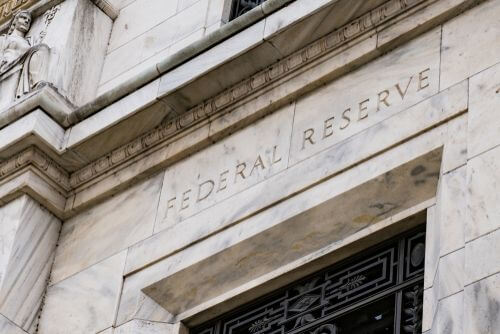
The Federal Reserve may be speeding up the approach of the next financial crisis, say many Bitcoin proponents. Just in the last month, the U.S. has printed more money than the entire market capitalization of Bitcoin.
With $210 billion recently injected into the economy, the Fed is attempting to take action to preserve the current economic momentum. This strategy by the Fed is referred to as quantitative easing, or QE, and is centered around buying up government bonds in order to lower interest rates and boost the performance of the economy.
Quantitative easing is antithetical to Bitcoin, to the point where the printing of more money by the ECB (European Central Bank) was mentioned in the first hash code for Bitcoin.
An increasing balance sheet for the Federal Reserve means more instability for the USD. With approximately $3.77 trillion on the balance sheet and values projected to reach upwards of $4.5 trillion in the next 5 years, this is starting to feel like we are delaying the inevitable.
Preserving the Status Quo
In fact, by propping up the economy, it could be getting much much worse. Buying assets like gold, Bitcoin, and other cryptocurrencies is said to be a good bet against fiat currency for this reason. These are not inflationary assets and don’t inherently need to lose value over time.
As Mervyn King, the former Bank of England governor, said:
“By sticking to the new orthodoxy of monetary policy and pretending that we have made the banking system safe, we are sleepwalking towards that crisis.”
The interesting part of all this is that it occurs at the same time as Bitcoin mining hits a major milestone. This Friday the cryptocurrency will hit a point where there are only 3 million tokens left to mine. This event puts a level of stark contrast between Bitcoin and fiat currency due to the level of supply that exists when compared with the competition to get ahold of the coin.
Using Derivatives to Pop the Market
There is another interesting narrative emerging regarding the Trump administration allegedly using the derivatives market to pop the Bitcoin bubble at the end of 2017. Former CFTC Chairman Christopher Giancarlo has said that it allowed for short positions to enter the market, which brought balance into the equation.
According to him, before then, the only position that could be taken is that of a believer and derivatives finally allowed for the counter position to be taken. In an interview with Coindesk, he said:
“One of the untold stories of the past few years is that the CFTC, the Treasury, the SEC and the [National Economic Council] director at the time, Gary Cohn, believed that the launch of bitcoin futures would have the impact of popping the bitcoin bubble. And it worked.”
Popping the bubble could be considered interventionist, but it also prevents massive collapses and instead brings ebbs and flows to different markets. Our above discussion of the USD shows the exact opposite policy in action, where a bubble is present and no one is really cognizant of the risks that come with it. Maybe the big question is why people only care about Bitcoin bubbles and not fiat bubbles….

